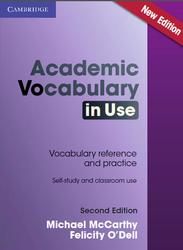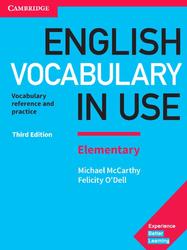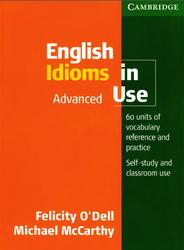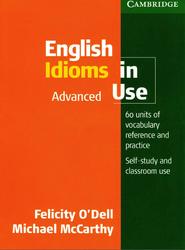This book can be used in class or as a self-study book. It is intended to take learners from an upper-intermediate level of vocabulary to an advanced level. The vocabulary has been chosen for its usefulness in everyday situations, and we consulted the Cambridge English Corpus, a billion-word-plus written and spoken corpus of present-day English which includes a huge learner corpus, to help us decide on the words and phrases to be included and to help us understand the typical problems learners encounter at the advanced level. We also consulted the English Vocabulary Profile to make sure that the words in the book are a representative sample of vocabulary that is typical of the Common European Framework levels Cl and C2. Visit the English Vocabulary Profile at www.cambridge.org/elt/inuse.
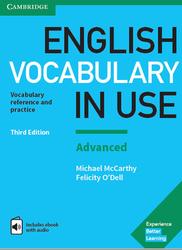
Applying for a job.
Replace the underlined words with a word or phrase from A or B with a similar meaning.
1 You don’t need to have done this job before.
2 As part of my new job, I get meals partly paid for by the company.
3 It’s really important to make your application look different from all the others.
4 Working in the factory over the summer gave me some direct experience of manufacturing.
5 I’m hoping to work in the area of automotive manufacturing.
6 Prism Consulting has a number of positions available for graduates.
7 The ad said the company will provide all the training you need.
8 You should only apply for the job if you have led a team before.
9 The salary isn’t great, but they offer an attractive set of other advantages.
CONTENTS.
Thanks.
Introduction.
Work and study.
1 Cramming for success: study and academic work.
2 Education: debates and issues.
3 Applying for a job.
4 Job interviews.
5 At work: colleagues and routines.
6 At work: job satisfaction.
7 At work: careers.
People and relationships.
8 Describing people: positive and negative qualities.
9 Describing people: appearance and mannerisms.
10 Describing people: personality and character traits.
11 Relationships: friends forever.
12 Relationships: ups and downs.
13 Emotions and reactions.
14 Negative feelings.
15 Birth and death: from cradle to grave.
Leisure and lifestyle.
16 Free time: relaxation and leisure.
17 All the rage: clothes and fashion.
18 Home styles, lifestyles.
19 Socialising and networking.
20 The performance arts: reviews and critiques.
21 The visual arts.
22 Talking about books.
23 Food: a recipe for disaster.
24 Dinner’s on me: entertaining and eating out.
Travel.
25 On the road: traffic and driving.
26 Travel and accommodation.
27 Attracting tourists.
The environment.
28 Describing the world.
29 Weather and climate.
30 Brick walls and glass ceilings.
31 Taking root and reaping rewards.
32 The animal kingdom.
33 Our endangered world.
Society and institutions.
34 Here to help: customer service.
35 Authorities: customs and police.
36 Beliefs.
37 Festivals in their cultural context.
38 Talking about language.
39 History: since the dawn of civilisation.
40 The haves and the have-nots.
41 British politics.
42 International politics.
43 The letter of the law.
44 War and peace.
45 Economy and finance.
46 Personal finance: making ends meet.
The media.
47 The media: in print.
48 The media: internet and email.
49 Advertising.
50 The news: gathering and delivering.
Health.
51 Healthcare.
52 Illness: feeling under the weather.
53 Medical language.
54 Diet, sport and fitness.
Technology.
55 Industries: from manufacturing to service.
56 Technology and its impact.
57 Technology of the future.
58 Energy: from fossil fuels to windmills.
Basic concepts.
59 Space: no room to swing a cat.
60 Time: once in a blue moon.
61 Motion: taking steps.
62 Manner: behaviour and body language.
63 Sounds: listen up!.
64 Weight and density.
65 All the colours of the rainbow.
66 Speed: fast and slow.
67 Cause and effect.
68 Spot the difference: making comparisons.
69 Difficulties and dilemmas.
70 Modality: expressing facts, opinions, desires.
71 Number: statistics and quantity.
Functional vocabulary.
72 Permission: getting the go-ahead.
73 Complaining and protesting.
74 Apology, regret and reconciliation.
75 A pat on the back: complimenting and praising.
76 Promises and bets.
77 Reminiscences and regrets.
78 Agreement, disagreement and compromise.
79 Academic writing: making sense.
80 Academic writing: text structure.
81 Writing: style and format.
82 Whatchamacallit: being indirect.
83 Give or take: more vague expressions.
84 The way you say it.
Words and meanings.
85 Abbreviations and acronyms.
86 Prefixes: creating new meanings.
87 Suffixes: forming new words.
88 Word-building and word-blending.
89 English: a global language.
90 Easily confused words.
91 One word, many meanings.
Fixed expressions and figurative language.
92 Collocation: which words go together.
93 Metaphor: seeing the light.
94 Idioms for everyday situations and feelings.
95 Brushing up on phrasal verbs.
96 Connotation: making associations.
Language variation.
97 Register: degrees of formality.
98 Divided by a common language.
99 Language and gender.
100 In the headlines.
101 Red tape.
Answer key.
Phonemic symbols.
Index.
Acknowledgements.
Enhanced ebook.
Бесплатно скачать электронную книгу в удобном формате, смотреть и читать:
Скачать книгу English Grammar in Use, Advanced. McCarthy M., O’Dell F., 2017 - fileskachat.com, быстрое и бесплатное скачивание.
Скачать pdf
Ниже можно купить эту книгу, если она есть в продаже, и похожие книги по лучшей цене со скидкой с доставкой по всей России.Купить книги
Скачать - pdf - Яндекс.Диск.
Дата публикации:
Хештеги: #учебник по английскому языку :: #английский язык :: #McCarthy :: #O’Dell
Смотрите также учебники, книги и учебные материалы:
Следующие учебники и книги:
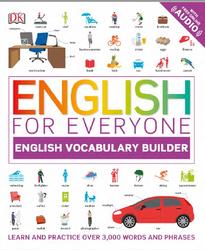 English for Everyone, English Vocabulary Builder, Booth T., 2018 — Each unit of English for Everyone: English Vocabulary Builder consists of a teaching spread and a practice spread. Teaching spreads … Книги по английскому языку
English for Everyone, English Vocabulary Builder, Booth T., 2018 — Each unit of English for Everyone: English Vocabulary Builder consists of a teaching spread and a practice spread. Teaching spreads … Книги по английскому языку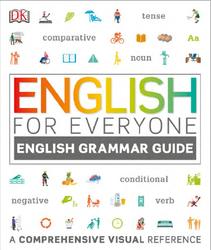 English for Everyone, English Grammar Guide, 2016 — Фрагмент из книги: The present simple is used to make simple statements of fact, to talk about things that happen … Книги по английскому языку
English for Everyone, English Grammar Guide, 2016 — Фрагмент из книги: The present simple is used to make simple statements of fact, to talk about things that happen … Книги по английскому языку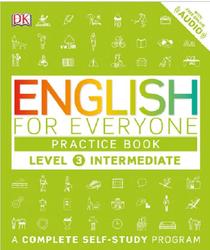 English for Everyone, Intermediate, Practice Book, Level 3, MacKay B., 2016 — English for Everyone is designed for people who want to teach themselves the English language. Like all language courses, it … Книги по английскому языку
English for Everyone, Intermediate, Practice Book, Level 3, MacKay B., 2016 — English for Everyone is designed for people who want to teach themselves the English language. Like all language courses, it … Книги по английскому языку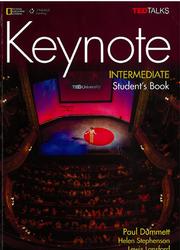 Keynote, Intermediate, Student’s Book, Dummett P., Stephenson H., Lansford L., 2015 — Keynote, Intermediate, Student s Book, Dummett P., Stephenson H., Lansford L., 2015. Фрагмент из книги: We get information now in … Книги по английскому языку
Keynote, Intermediate, Student’s Book, Dummett P., Stephenson H., Lansford L., 2015 — Keynote, Intermediate, Student s Book, Dummett P., Stephenson H., Lansford L., 2015. Фрагмент из книги: We get information now in … Книги по английскому языку
Предыдущие статьи:
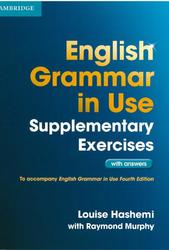 English Grammar in Use, Supplementary Exercises, With answers, Hashemi L., Murphy R., 2012 — English Grammar in Use Supplementary Exercises is for intermediate and advanced students who want extra practice in grammar, without help … Книги по английскому языку
English Grammar in Use, Supplementary Exercises, With answers, Hashemi L., Murphy R., 2012 — English Grammar in Use Supplementary Exercises is for intermediate and advanced students who want extra practice in grammar, without help … Книги по английскому языку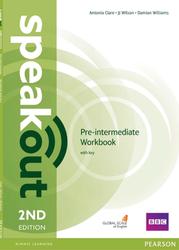 Speakout, Pre-Intermediate, Workbook, With key, Clare A., Wilson J., Williams D., 2015 — Speakout 2nd Edition is a comprehensive six-level general English course for adults that has been developed in association with BBC … Книги по английскому языку
Speakout, Pre-Intermediate, Workbook, With key, Clare A., Wilson J., Williams D., 2015 — Speakout 2nd Edition is a comprehensive six-level general English course for adults that has been developed in association with BBC … Книги по английскому языку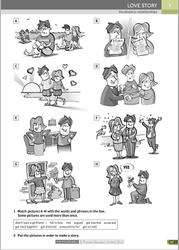 Speakout, Pre-Intermediate, Photocopiables supplementary materials, 2016 — Фрагмент из книги: You are Richard Cagney’s wife. You both got on the train at 6p.m. and were travelling to … Книги по английскому языку
Speakout, Pre-Intermediate, Photocopiables supplementary materials, 2016 — Фрагмент из книги: You are Richard Cagney’s wife. You both got on the train at 6p.m. and were travelling to … Книги по английскому языку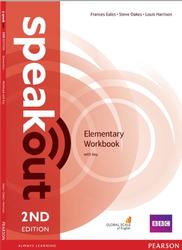 Speakout Elementary, Workbook, With key, Eales F., Oakes S., Harrison L., 2015 — Speakout 2nd Edition is a comprehensive six-level general English course for adults that has been developed in association with BBC … Книги по английскому языку
Speakout Elementary, Workbook, With key, Eales F., Oakes S., Harrison L., 2015 — Speakout 2nd Edition is a comprehensive six-level general English course for adults that has been developed in association with BBC … Книги по английскому языку

